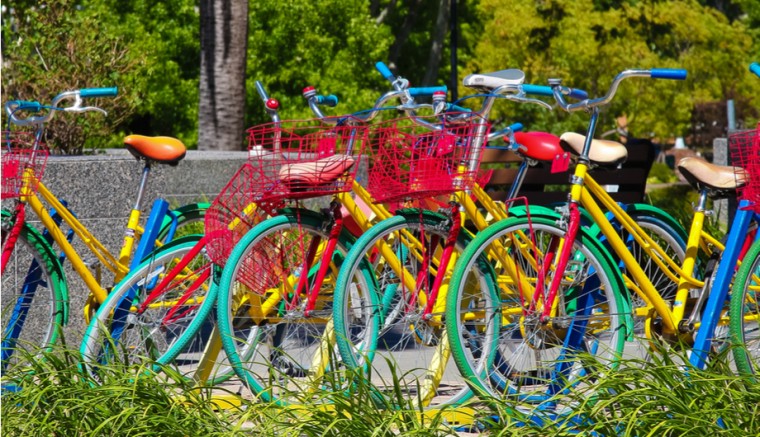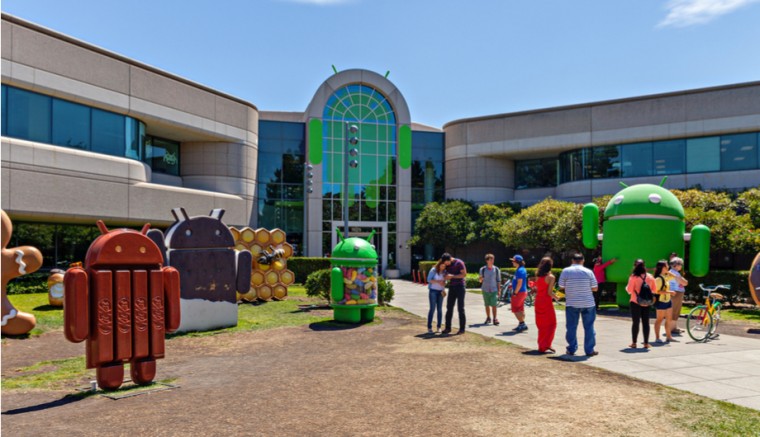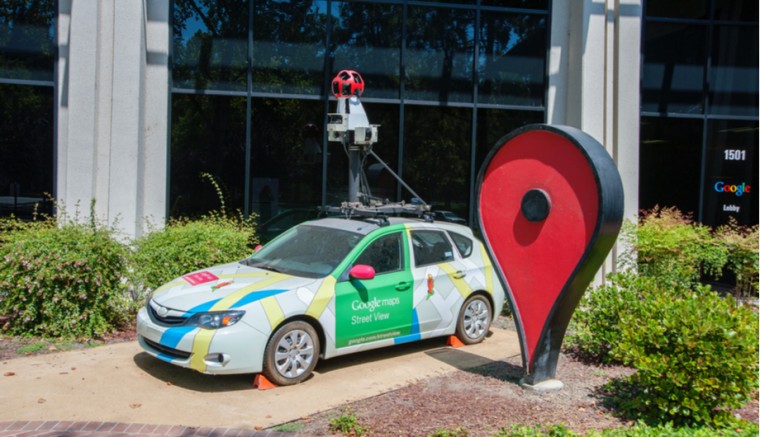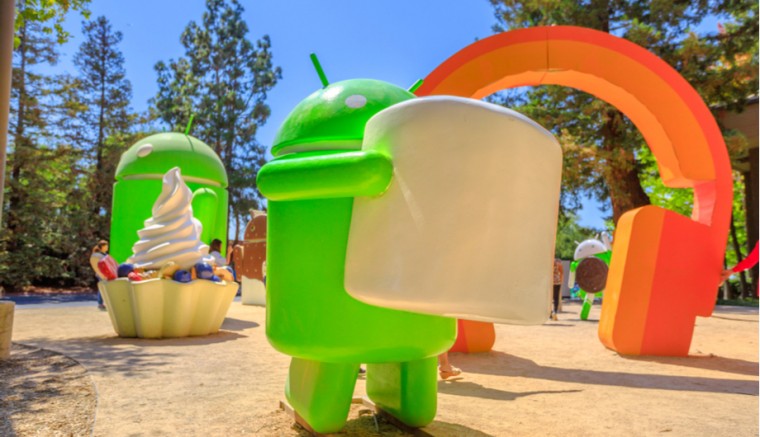Discover Silicon Valley
Silicon Valley is not a place. There is no town called “Silicon Valley” (although many claim it). Silicon Valley is a concept. A state of mind. A philosophy, a belief in the future (or the future of the right now). It’s about people coming together around ideas, many ideas. Ideas as disparate as new advances in biotech, self-driving cars, virtual reality, artificial intelligence, and less creatively, another new customer service or accounting software that we didn't know we needed.
But it wasn’t always this way. The area we vaguely call Silicon Valley (comprising mainly of the Santa Clara Valley and the San Francisco Bay Peninsula) was mostly farmland not that long ago. The tech pioneers of the Valley were not the world-famous tech companies we’re all familiar with today like Google or Apple, but more mundane ones like Hewlett-Packard.
Hewlett-Packard first came to the world in a small wooden shed garage in Palo Alto, California in the late 1930s. This started a tradition in origin stories that many other world-famous tech companies have followed (including Apple).
For a tech company to be born in a garage in Palo Alto should not come as a surprise. Palo Alto is not only located in the midpoint between the Santa Clara Valley and the San Francisco Peninsula (i.e., the epicenter of what we today call Silicon Valley), but it's also home to Stanford University.
But it wasn’t always this way. The area we vaguely call Silicon Valley (comprising mainly of the Santa Clara Valley and the San Francisco Bay Peninsula) was mostly farmland not that long ago. The tech pioneers of the Valley were not the world-famous tech companies we’re all familiar with today like Google or Apple, but more mundane ones like Hewlett-Packard.
Hewlett-Packard first came to the world in a small wooden shed garage in Palo Alto, California in the late 1930s. This started a tradition in origin stories that many other world-famous tech companies have followed (including Apple).
For a tech company to be born in a garage in Palo Alto should not come as a surprise. Palo Alto is not only located in the midpoint between the Santa Clara Valley and the San Francisco Peninsula (i.e., the epicenter of what we today call Silicon Valley), but it's also home to Stanford University.

Stanford University is the West coast’s palm-lined ‘Ivy League' university without ivy, but with plenty of advances in math and computer engineering. So it should come as no surprise that most pioneering companies that went on to create Silicon Valley were founded by Stanford alumnae.
Hewlett-Packard, Sun Microsystems, Yahoo, Apple, and many more famous (and infamous) Silicon Valley companies got their start in the halls of Stanford, or by people closely associated with it. Palo Alto local, Steve Jobs, took freshman classes in Stanford. Google got its start as a research project by Larry Page and Sergey Brin when they were both Ph.D. students at Stanford.
The Roots of The Valley
In spite of its recent rural past, the tech roots of Silicon Valley run deep. The US Navy founded several projects in the area in response to the Soviet Union launch of their Sputnik satellite in 1957. One of these efforts was a transistor company called Fairchild Semiconductor, which was the only company in the world capable of developing semiconductors at the time. Fairchild Semiconductor pioneered the use of silicon transistors at a time when germanium was the most common material for semiconductor use, and the rest is history.

Company Towns
Silicon Valley was born out of the pressures of the Cold War but entered our lives via more recent actors like Google, Apple, and Facebook. The first thing to notice about Silicon Valley is that it’s not one place in particular, but many places at once. It is, in fact, a company town. Many company towns at that, which put together, form the whole.
So that’s how Silicon Valley got carved up into fiefdoms. You have Facebook town (Menlo Park), Google town (Mountain View), Apple town (Cupertino). There was once even a Yahootown (Sunnyvale).
But this carving up goes beyond a location for global headquarters. The big Silicon Valley players are effectively taking over their own towns and planning for a future in which their employees will work and live in planned communities around their headquarters.
This concept is not new. Henry Ford perfected it over 100 years ago. What makes it more insidious in this case is that having different company towns which are focused only on their own interests could (will) cause problems for the community around them. Rents in Silicon Valley already are the highest in the USA (even beating out Manhattan). You can see lines of motorhomes and trailers parked all around the Googleplex because some Google employees cannot afford to pay rents in Mountain view (not everyone in the Googleplex earns six figures, and even some that do still live in trailers because who wants to hand over $3500 in rent every month for a one bedroom?). Even successful couples are moving into homes with other successful couples to share the $10k rent on some Palo Alto homes. The high price of success.
Start Your Exploration
Start your Silicon Valley exploration in Menlo Park, home of Facebook. Facebook is a relative newcomer to Menlo Park. Their first offices in Silicon Valley were in downtown Palo Alto, but they soon outgrew that location and decided to take over the old Sun Microsystems campus in Menlo Park. As a nod to their history, their famous thumbs-up sign on 1 Hacker Way still reveals its old Sun Microsystems logo on its back.
Facebook Goes Gehry
Perhaps one of the most exciting things about Facebook’s Menlo Park Campus is the new Frank Gehry-designed offices they built across the freeway from the old Sun Microsystems campus. These sleek new digs are low to the ground and are as long as a container ship. Frank Gehry’s innovation was to add a rooftop garden that covers the entire roof. This garden, really only visible from the air, makes the building blend into the surrounding estuary when viewed from above. This is truly one of Frank Gehry's masterpieces (and he has plenty more to choose from, including the Guggenheim in Bilbao and the Walt Disney Concert hall in Los Angeles).

Apple’s Spaceship Office
Steve Jobs never got to see his Spaceship office concept become a reality, but the brand new building in Cupertino bears all of Job’s design hallmarks. It blends seamlessly with its surroundings, has a sleek circular design that is a masterpiece of zen and even the solar panels on the roof contribute to its sleek factor. But this was not Job’s only input into the local Cupertino lore. The original Apple campus is located at 1 Infinite Loop, a private joke about the programming concept of the infinite loop.
Uninvited visitors are not allowed into Apple Park (Spaceship 1) or Infinite Loop, but fortunately, there is a visitor center located across the street from Apple Park. The visitor center is as sleek as an Apple Store can be, has a miniature replica of the Spaceship 1 office building concept and runs special events and programs for children. Yes, you can also buy Apple gear and have a cappuccino while you’re at it.

Google’s Googleplex
The Googleplex has been around longer than Apple's new spaceship and Facebook’s Frank Gehry-designed office building, hence it’s relaxed lived-in atmosphere. It might remind you of a university campus, with colorful Google bicycles, self-driving cars and Tesla charging stations.
The collection of buildings that form the Googleplex sit right next to a beautiful estuary on San Francisco Bay that is populated by countless species of birds, making it an excellent spot for a morning or evening hike or jog.
Google has plans for the area, and the future will see it transformed into a veritable Googletown, with residential and commercial real estate. These new residences are urgently needed, given the large number of motorhomes parked in and around the Googleplex.
Don't miss Android park, a quirky little jewel of a space, where all the previous versions of the Android operating system are celebrated with quirky and colorful plastic statues of the Android mascot turning into a Kit Kat bar or an Oreo cookie.

The Epicenter
The strongest claim to the epicenter of Silicon Valley has to go to the town of Palo Alto, California. Not only is it home to Stanford University, but its many bars and restaurants made frequent cameos in the HBO show “Silicon Valley.”
Palo Alto is also home to several Venture Capital firms that specialize in tech startups. Many of these startups received their first funding in Palo Alto, and many also opened their first offices on Palo Alto’s main drag; University Avenue. Facebook’s first California office was there, as well as Google.
One place not to be missed when visiting Palo Alto is Coupa Café - long a favorite meeting place for venture capital investors, local tech startups and hopefuls. It’s no wonder Coupa Cafe is known as 'the place where most Silicon Valley deals are made.' Pop in anytime, and you will find Apple laptops on almost every table, while the buzz of pitches fills the air.
Do not be fooled by the tech millionaire's casual look of Patagonia fleece vests and knitted sneakers. The deals that are done in Coupa Cafe have generated billions (in profits as well as, in some cases, losses. I’m looking at you Theranos!). Mark Zuckerberg and the Facebook staff would pop into Coupa Cafe to beta test new features when their office was located around the corner. Simpler times.

The Stanford Theatre
The true jewel of downtown Palo Alto is the Stanford Theatre. This 1920’s movie house, built in the California Mission style, was rescued from decay in the 1980s by the Packard Foundation and it has served Palo Alto well since by focusing on films from the Golden Age of Hollywood. Nowhere else in the world can one watch most of Alfred Hitchcock’s movies on the big screen regularly, as well as countless other classics like Casablanca, and many others.
Stanford University: Art & Science
Follow University Avenue from the Stanford Theatre, and you will soon find yourself in the Palm- lined avenue that welcomes visitors into Stanford University. The entire campus is built to evoke the California Mission style in vogue in the 1920s: Mediterranean arches, mosaics, and palm trees.
Dotted among the campus are several statues from the University’s Auguste Rodin collection, including the impressive 'The Burghers of Calais'.
Don't miss Stanford's museum (The Cantor Arts Center); not only is it free to visit, but it's perhaps the best art and culture museum on the West Coast, with an impressive Rodin sculpture garden (including The Thinker) and many other cultural artifacts from all over the world. It seems indeed that all the science generated by the university has translated into a beautiful collection of art for visitors and locals to enjoy.
In Conclusion, whether you’re a visitor, a local, or plan to move here, Silicon Valley is not a place one soon forgets. Its creative energy stays with you and propagates. You can see its influence all over the world, often in surprising ways. Come check out where it all started and where it all still happens, because it may not necessarily be that way forever. Nobody has a lock-in with creativity, but California’s open-mindedness has undoubtedly helped create this fertile ground that we now call Silicon Valley.
user rating :
5.00 stars (5 votes)
Max Milano is a novelist, filmmaker, photographer, and travel writer based in San Francisco, California. His latest novel, "Daughter of Recoleta," is available on Amazon. You can follow his travelogue at MaxMilano.com